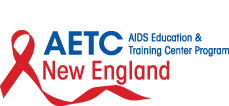.jpg)
National Native HIV/AIDS Awareness Day (NNHAAD) will be observed March 20. NNHAAD “is a national mobilization effort designed to encourage American Indians, Alaska Natives and Native Hawaiians across the United States and Territorial Areas to get educated, get tested, get involved in prevention and get treated for HIV,” according to the NNHAAD website.
Of the 36,398 HIV diagnoses in the U.S. and dependent areas during 2019, about 0.6% (210) were among American Indians and Alaska Natives (AI/AN). Of those diagnoses, about 77% (161) were among males, 21% (44) were among females, and 2% (5) were among transgender persons. Of the HIV diagnoses among AI/AN males, about nine out of ten were among gay and bisexual men. For the period 2010 through 2019, the number of new HIV diagnoses increased 36%.
To support activities commemorating NNHAAD, we have compiled an annotated list of online resources focusing on HIV/AIDS among AI/AN persons. For additional information on this topic, you might also visit NEAETC’s Online HIV Resource Library page focusing on American Indians and Alaska Natives and HIV.
Online Resources
HIV and American Indian/Alaska Native People (CDC) – This web page gives a brief overview of HIV diagnoses among AI/AN people in the U.S., and links to related pages with more detailed information on the following: HIV risk behaviors, HIV incidence, HIV diagnoses, knowledge of HIV status, viral suppression, prevention challenges, and what CDC is doing to reduce stigma, support HIV testing, prevent new infections, and improve HIV treatment and care in AI/AN people.
HIV/AIDS and American Indians/Alaska Natives (Office of Minority Health) – This web page has detailed statistical information about HIV and AIDS among AI/AN people, including: infection cases and rates in adults and children under 13 years old, AIDS cases and rates among adults, death rates, and HIV testing status of adults age 18 years or older.
Diagnoses of HIV Infection in the United States and Dependent Areas, 2019 (CDC) – This surveillance report includes detailed information about new HIV diagnoses, prevalence, and deaths among AI/AN people. Tables 2a, 2b, 7a, 7b, 9a, 9b, 12a, 12b, 16a, 16b, 21, and A2 focus specifically on HIV diagnoses, deaths, and prevalence by race/ethnicity. Some other tables that focus on different characteristics also include race/ethnicity breakdowns.
Estimated HIV Incidence and Prevalence in the United States, 2015-2019 (CDC) – This report provides estimates of the number of new HIV infections and the total number of persons living with HIV during each year from 2015 through 2019. It begins with a commentary section that summarizes highlights of the report, followed by 13 tables that present data on HIV incidence and prevalence among adults and adolescents, with breakdowns by race/ethnicity, sex at birth, age, transmission category, and region of residence. The race/ethnicity data include statistics for AI/AN people.
Infographics from the AIDSVu Website:
- Trends in HIV Diagnoses Among AI/AN People
- HIV Transmission Categories Among AI/AN Men and Women
- Young Persons Had Highest Percentage of New HIV Diagnoses Among AI/AN People
- Large Increase in New Diagnoses Among AI/AN Women
- HIV Care Continuum Among AI/AN People
- Five States with the Highest New HIV Diagnoses Among AI/AN Persons
National Native HIV/AIDS Awareness Day Website – This is the official website for NNHAAD. The site provides background information about the day, together with links to fact sheets, other educational materials, and products to promote HIV/AIDS awareness.
American Indians and Alaska Natives: Health Disparities in HIV/AIDS, Viral Hepatitis, STDs, and TB – This CDC web page examines health disparities in the AI/AN population, including HIV, hepatitis C, sexually transmitted infections (gonorrhea, chlamydia, and syphilis), and tuberculosis.
Celebrate American Indian/Alaska Native Heritage Month! – This CDC resource page includes information about health indicators and health disparities among AI/AN people, and discusses strategies for reducing health disparities. AI/AN Heritage month is commemorated in November.
American Indian and Alaska Native Health – This web page from MedlinePlus has links to many health resources focusing specifically on AI/AN communities.

